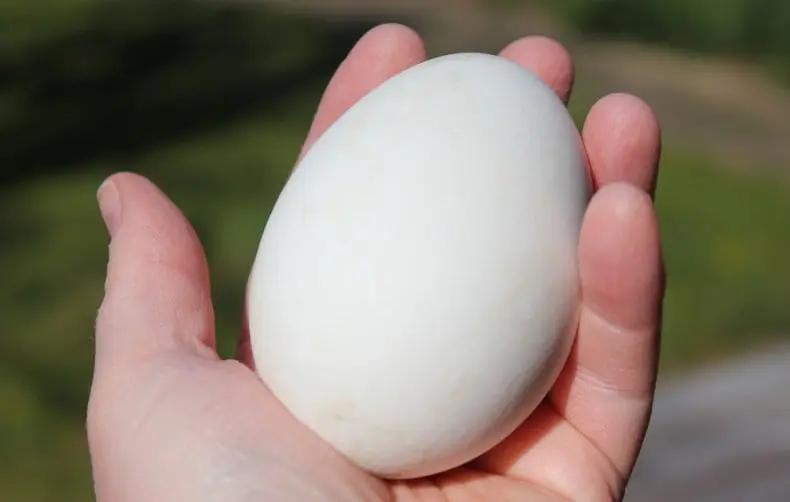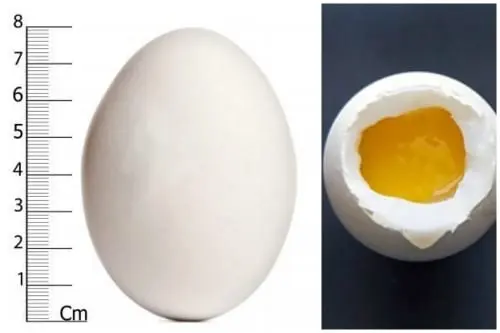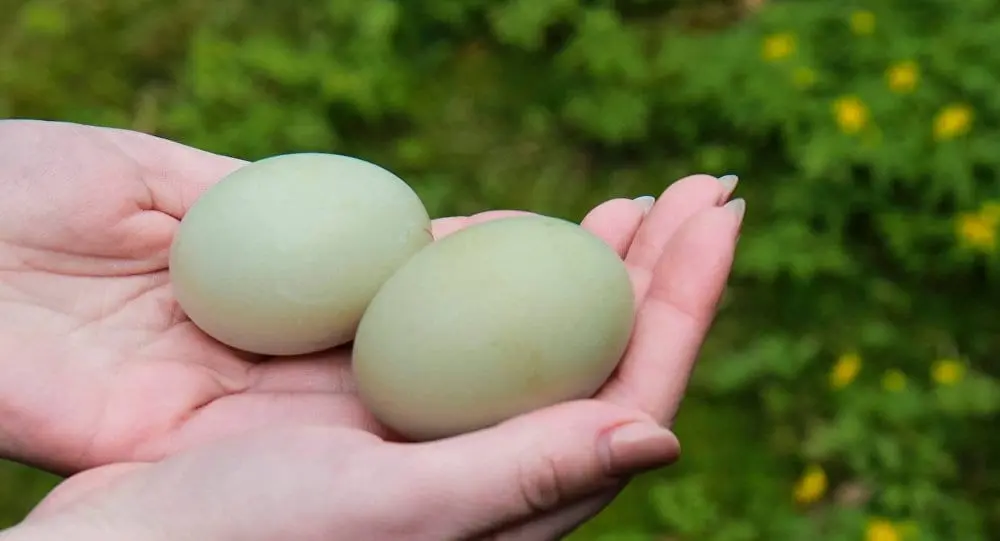Contents
Description
Goose eggs differ not only in their appearance from chicken eggs but also in nutritional value. There is still no consensus among nutritionists about their effect on the human body: some believe that this is a panacea for many diseases, others – a danger that lurks a serious threat inside. One thing is for sure clear: this is a product with a pronounced taste and rich aroma. Let’s find out how it is useful and how it can harm.
Goose eggs are popular in cooking. They are good fried, boiled, baked, added to the dough. But before eating such food, it is worthwhile to understand whether you can eat it at all.
Our ancestors have always loved this product, yet, it was not as frequent a guest as chicken in the diet eggs. All because geese rush much less often than chickens. Overall, it is nutritious and valuable.
Important! Fresh goose eggs have a pleasant aroma. Any unpleasant smell is a sign of spoil.

How to use
When using, you must follow all prescribed precautions to minimize the risk of a threat to your own health.
Fried goose eggs are not easy to distinguish from chicken eggs by their taste, but their large yolk is very difficult to miss in the general dish. When fried, they are quite fatty and have a strong aroma. In any case, you can consume the heat-treated product without any particular concern.
The composition and calorie content of a goose egg
- Calorie content 185 kcal
- Proteins 13.9 g
- Fat 13.3 g
- Carbohydrates 1.4 g
- Dietary fiber 0 g
- Water 70 g
Composition and useful properties
The nutritional value of these eggs can be determined by weight: a larger egg has a higher nutritional value.
Goose eggs contain many important minerals and vitamins. The product is rich in iron, phosphorus, sulfur, copper, B vitamins, and vitamins K, A, D and E. Thanks to vitamins, goose eggs improve brain activity and maintain the level of sex hormones.
This product can be eaten to improve memory, cleanse blood vessels and cleanse the liver of toxic substances.
The yolk of a goose egg is rich in such a unique substance as lutein, a powerful antioxidant.
Goose eggs can be used as a preventive measure for vision problems like cataracts.
The goose egg is an indispensable product in the diet of pregnant women – it is rich in substances necessary for the proper development of the child’s brain.

You can use a goose egg to make a healthy and nutritious face mask. To cook it, you should slightly split the egg to separate the whites from the yolk. Place the yolk in a container and add grated or finely chopped tomato to it. For dry skin, add more tomatoes. Beat the mass well and apply it to the face for 15 minutes, then you can remove the mask.
Goose eggs harm
The product does not harm the human body. The only contraindication is an allergy to a goose egg or its individual intolerance.
Taste qualities
The taste of goose eggs is more intense than that of traditional chicken eggs. Due to its high protein content, the protein has a dense texture. Fresh protein is thick, viscous, with a slight bluish tinge.
In the process of heat treatment, it becomes completely white. Regardless of the egg’s size, the yolk is dark orange, rich in color and consistency. The boiled yolk is yellow, and when fried, it has a reddish tint.
The taste of a goose egg directly depends on the quality of the feed that the birds eat. When grown in closed enclosures (nutrition-balanced dry food), eggs have a delicate taste without the extraneous aftertaste. Free cultivation with access to water impairs the product’s taste: a light “muddy” note is inherent in ready-made dishes.
Goose eggs in cooking

Large, even eggs with a perfectly white, dense shell are used to prepare hundreds of dishes – from soups to gourmet pastries and alcoholic beverages. Like chicken eggs, the goose product is used:
- For mashed soups and traditional first courses, cabbage soup, and okroshka;
- Making omelets, poached eggs, fried eggs;
- For sweet and unleavened pastries;
- In the process of preparing main courses and side dishes;
- When creating mayonnaise, sweet and hot sauces;
- As the main ingredient in warm and cold salads, snacks;
- For creating airy desserts, cream, and pudding;
- As a base for egg liqueurs and cocktails.
The most exquisite dishes include baked in the shell or boiled goose eggs with subsequent gelling and solid and very tender poached eggs.
Geese are considered not very clean birds, so raw eggs are not recommended. Before cooking, rinse the eggs thoroughly under running water and cook, covered with a lid, for at least 15-20 minutes.
Types and varieties of goose eggs

Goose eggs with a dense calcareous shell are graded according to the degree of freshness:
• Diet – shelf life does not exceed 10 days;
• Canteens – the egg can be stored for up to 30 days.
There are also 2 categories of goose product concerning their size:
• 2nd category – an egg, the weight of which varies within 120-149.9 grams;
• Category 1 – selected product weighing 150-200 g.
Goose eggs are not found in the traditional trading network. You can buy them in specialized stores or directly on the territory of farms or private households.











El pollastre és una gallina o un gall que no ha arribat a l’edad adulta. S’ha de dir ous de gallina.
Corect ar fi, ou de găină.
Steht nicht mal was zu Cholesterin und wieviele Eier gesund sind und was nicht mehr … hätte ich interessant gefunden